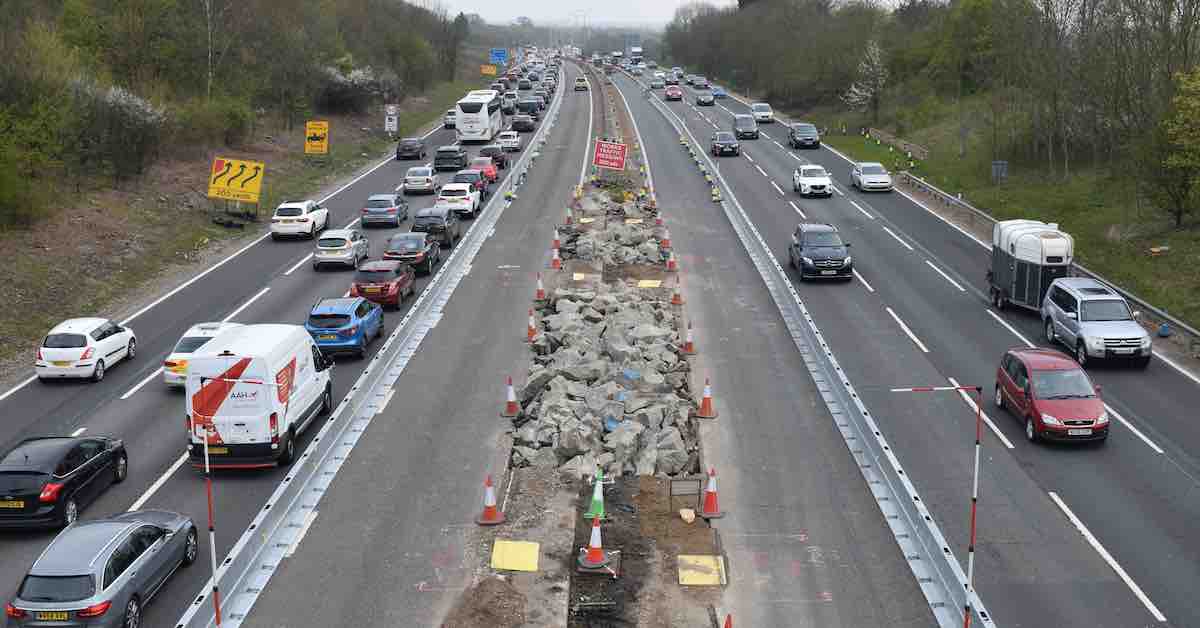In light of the scrapping of future smart motorways UK Property Forms editor-in-chief Alan Bunce has a few questions about we got here.
After years of disruption, billions of pounds and 38 deaths, the concept of smart motorways has come to a stop sign.
A very welcome stop sign in my view but you have to wonder how these death traps became such a celebrated innovation in the first place.
Around 20 years ago I asked for a meeting with the then chief executive of an organisation called Thames Valley Economic Partnership. TVEP had lobbied local authorities, MPs and ministers for measures which helped businesses make themselves and the region more prosperous.
I was seeking to find a lead story for the business section of the local paper, the Reading Chronicle.
One plan I learned was to widen the M4 from Reading to London. I asked how it could be done and the answer was a shock. ‘By taking out the hard shoulder’, I was told.
My immediate thought was ‘that’s insane’. I felt sure that, in our health & safety obsessed world, no transport minister would sign up to such an irresponsible idea.
But if we’ve learned anything in recent times, it is that politicians will freely make reckless decisions without regard for the consequences. There are now hundreds of miles of deadly motorways, given the dubious label ‘smart’.
Unfortunately the word gives the subliminal impression that these highways are in some way cleverer than those designed in the 1970s. Yet ‘smart’ is simply an acronym for ‘specific, measurable, achievable, realistic and time-bound’ which is more a business/motivational concept than a way to reduce traffic congestion.
In reality smart motorways rely on radar-based technology called ‘stopped vehicle detection’ which was shown last year to be unsafe and needing urgent improvement.
If you break down on a standard motorway you have a chance to move into the relative safety of the hard shoulder. If you break down in a live lane on a smart motorway, the best thing you can do is pray.
On a standard motorway, you can pull over in the case of an emergency within the car. If you’re driving and your child chokes, falls ill, passes out or has a fit, would you stop in a live lane to help them?
How will you feel with your family trapped on a live lane until the technology notices you and puts a red cross on a gantry somewhere, as if that in itself will make you safe? Don’t forget you’re on a smart motorway along with people like Andy Burnham.
If you are lucky enough to get into one of those yellow refuge areas and you’re able to resume your journey, you will have to re-enter traffic from a standing start since they are too short to build up any speed in.
If a pile up occurs on a smart motorway how can emergency vehicles navigate through four lanes of stationary traffic where there is no hard shoulder? How could no-one have predicted these problems?
In any case, how does a smart motorway reduce congestion? If you make one road wider, you just funnel more traffic onto neighbouring roads.
And in a world where everything possible is being done to stop people driving cars, why are we widening roads in the first place? You come off your smart motorway into your low traffic neighbourhood. Can no politician see a problem here?
But before I celebrate that, on this one occasion, the Government has made the right call, I’m reminded of the many bold announcements ministers like to make before quietly rowing back on them a few months later.
The first announcement gets all the retweets but the second one might just be announced when we’re all concerned about something else. I’ll celebrate this decision but I think I’ll also keep my eyes on the road ahead.
Image shows work going on to turn J3 – J12 of the M4 into a smart motorway in May 2019.
© Thames Tap (powered by ukpropertyforums.com).
Sign up to receive our weekly free journal, The Forum here.




